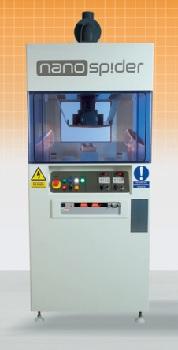Using AI to control energy for indoor agriculture
30 September 2024
Published online 26 April 2011

Wrapping antibiotics in nanofibres might make them more effective against drug-resistant bacteria and reduce severe side effects, according to Saudi researchers.
Mohamed El-Newehy, head of the nanofibres research team at King Saud University, Saudi Arabia, reported on his team's findings at the American Chemical Society (ACS) meeting in Anaheim, California, United States, held 27-31 March, 2011.
The researchers used a 'nanospider' machine to wrap the nanofibres around the antibiotic agents. "Nanospider works much like a cotton candy machine. We used it to spin a web of nanofibres which encapsulate the antibiotic within," says El-Newehy.
The nanofibres wrapping encapsulates the drug, so controlling the rate of release of the drug within the body and allowing it to stay inside longer before it is degraded.
"This will reduce side effects as well as toxicity," says Al-Newehy, "We will use smaller amounts of active ingredients that will last for 24 to 48 hours within the body." Without the wrapping, the drug would stay only a few hours within the body.
When the antibiotic is administered, some of it is broken down or altered by chemical reactions in the body. "By the time it reaches the site of infection, the concentration of the antibiotic may be less than that required to destroy the bacteria completely," says Samia Hawas, a microbiologist at Mansoura University, Egypt. This gives bacteria the crucial time needed to develop drug resistance.
"Encapsulating the antibiotic within the nanofibres will slowly release it and keep its concentration stable within the body over a longer period of time so the bacteria don't have a chance to genetically mutate and become resistant," explains Hawas.
The researchers used the antibiotic Metronidazole for their experiment "Now, we are planning to use other antibiotics and extend our study to include In vivo studies," adds El-Newehy.
He suggests the theory would be cheap to apply as it uses widely available products, such as nylon, polyvinyl alcohol and chitosan — which is produced commercially from the exoskeleton of chitin from crustaceans. The reduced concentrations of active agent should cheapen this form of antibiotic treatment.
"We still have from one year to three years to complete the research. We need to do animal testing, conduct clinical trials and measure toxicity levels before we seek FDA approval," says El-Newehy.
The high surface area of nanofibres relative to their mass makes them ideal for other medical applications, adds Newehy. They could be used to manufacture high-tech bandages, medical textiles and antimicrobial materials to control post-operative inflammation and promote wound healing, including, for example, diabetic ulcers.
doi:10.1038/nmiddleeast.2011.50
Stay connected: